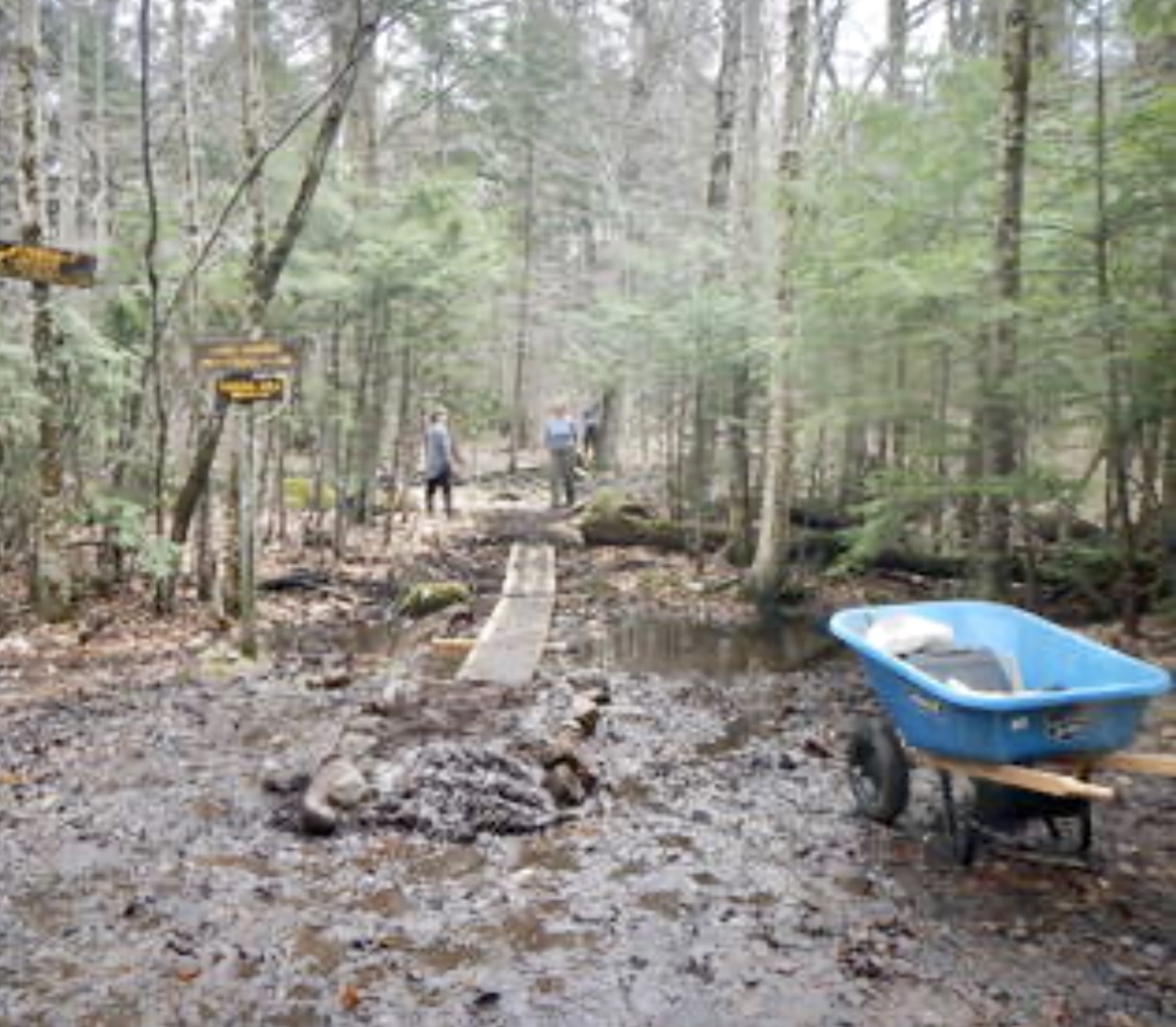Mud season is here, much to hikers’ discontent
By Jennifer Patterson
With it finally beginning to feel like spring, many people are itching to get outdoors.
While hikers are understandably eager to dust off their boots and enjoy some fresh air, officials from the New York State Department of Environmental Conservation are urging outdoor enthusiasts to be extra prepared or to stay off the trails entirely during spring’s notorious mud season.
It happens every year, when snow starts to melt and spring showers begin. This combination of moisture in the ground, along with fluctuating temperatures, creates the perfect environment for muddy trails.
The Catskills are experiencing an early start to mud season because the ground wasn’t able to consistently freeze during the winter. And despite the heavy late snowfall, a relatively mild winter translated to little snow on hiking trails, causing a muddy mess as spring temperatures continue to warm.
Mud season usually beings in late March and lasts until May or June, when trails dry up and harden with sustained warmer temperatures.
Hiking during this messy season not only presents safety concerns, but it also compounds conservation challenges on trails and in forests, according to the DEC. Hikers who hit the trails early can unknowingly cause expensive damage to trail systems and the natural environment.
New York’s changing climate has extended mud season, with higher temperatures in late winter increasing the contrast between conditions at the trailhead and mountain peaks, according to the DEC.
These differences create a range of challenging conditions, like steep trails with thick mud, deep slushy snow, slippery areas with compacted ice (the DEC refers to narrow snowy/icy paths as “monorails”) and flooded trails. If hikers aren’t wearing the proper footwear with spikes, their adventure will be no walk in the park.
Many trails can also seem to disappear from step to step and become streams. Crossing these areas is inadvisable, especially when there is fast-moving frigid water. Hikers who fall are at risk of hypothermia.
In addition, when hikers try to avoid mud and walk around it, they may inadvertently trample and destroy vulnerable vegetation that is just starting to regrow after the winter months.
Loss of vegetation impacts wildlife habitat, as high foot traffic causes changes to the soil and grass that animals and insects rely on.
Mountain biking on muddy trails is also discouraged by the DEC, because bikes leave behind large holes that need additional repairs when they dry up, affecting the usability of the trail for the rest of the season.
The DEC frequently issues “muddy trail advisories” to keep hikers off the trails, allowing snow to melt and the ground to dry thoroughly.
For information, go to https://www.dec.ny.gov/outdoor/113437.html.

